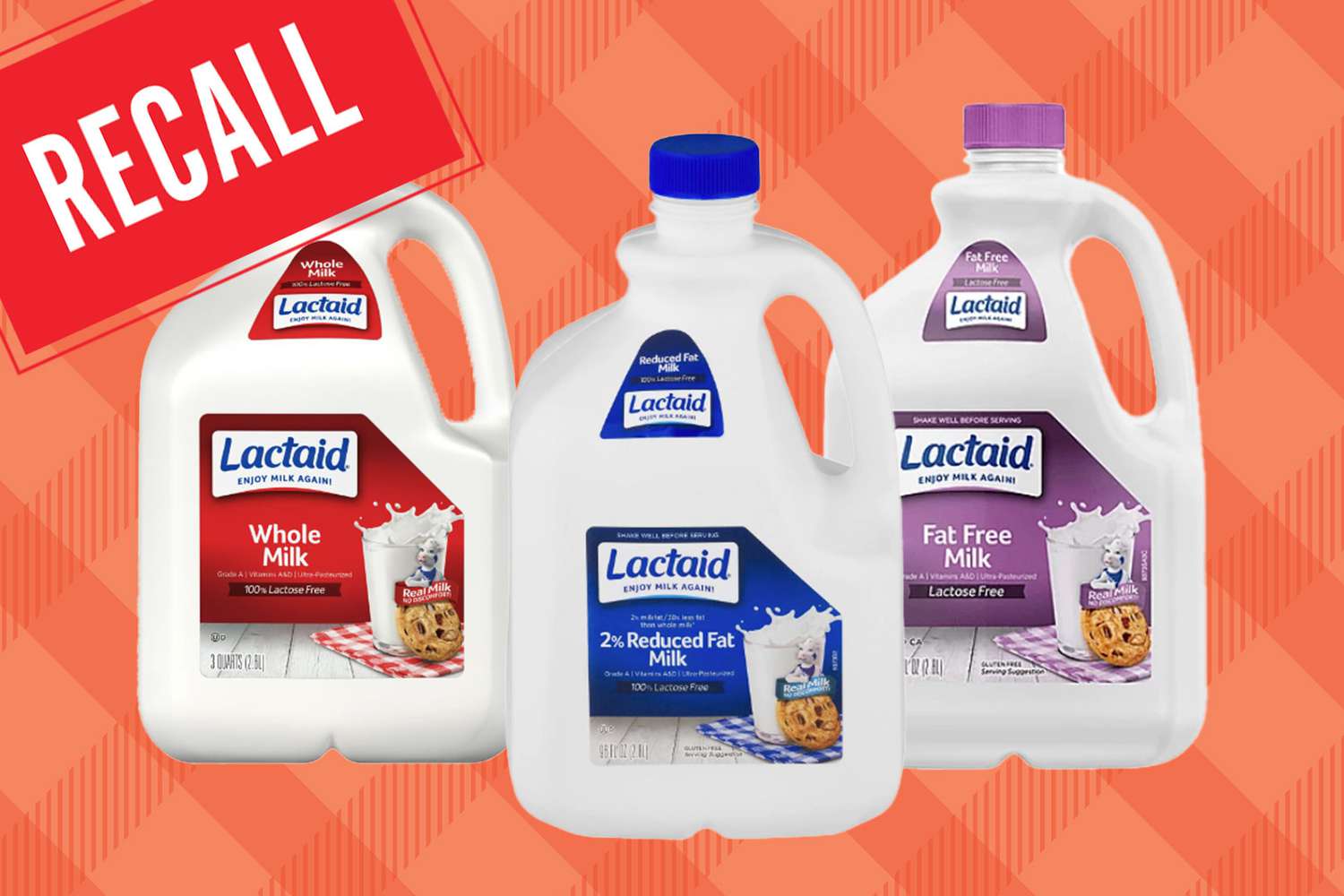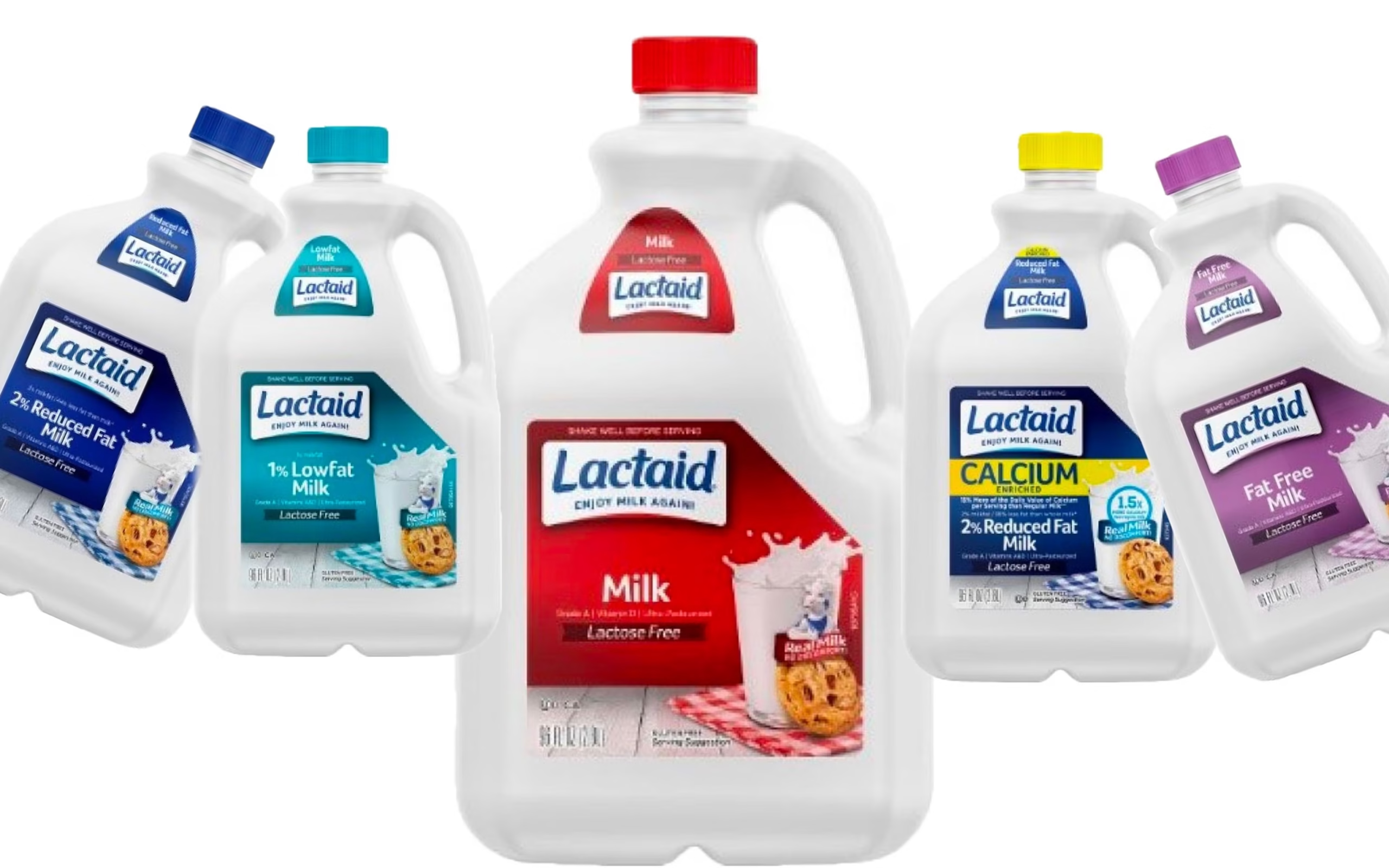Lactaid Milk Recalled: Everything You Need to Know
What Prompted the Lactaid Milk Recall?
The Lactaid milk recalled situation began when H`
Lactaid Whole Milk
Lactaid 2% Milk
Lactaid 1% Milk
Lactaid Fat-Free Milk
Lactaid 2% Calcium-Enriched Milk
To identify if your milk is part of the Lactaid milk recalled batch, look for the code “51-4109 P2” printed in the top center of the jug. You’ll also want to check the “Best By” dates, which are listed on the FDA’s website. These specific containers were produced and distributed between September 5 and September 18, 2024, so if you’ve got a jug from that timeframe, it’s time to take a closer look.

Where Was the Recalled Milk Distributed?
The Lactaid milk recalled products didn’t reach every corner of the U.S., but they were distributed to a significant number of states. The affected 96-ounce containers were shipped to retailers and wholesalers in 27 states, including Alabama, Colorado, Connecticut, Florida, Georgia, Illinois, Maryland, Michigan, Minnesota, New Jersey, New York, Pennsylvania, Virginia, Wisconsin, and more. If you live in one of these states and have Lactaid milk in your fridge, you’ll want to double-check the code and “Best By” date to see if it’s part of the Lactaid milk recalled batch. For a full list of states, you can visit the FDA’s official recall page.
Health Risks of Undeclared Almonds
Why is the Lactaid milk recalled such a big deal? The issue lies in the potential presence of undeclared almonds, which can be dangerous for people with almond allergies or severe nut sensitivities. Consuming a product with undeclared allergens can lead to allergic reactions ranging from mild symptoms like hives or itching to severe, life-threatening conditions like anaphylaxis. Anaphylaxis can cause difficulty breathing, swelling, and a drop in blood pressure, requiring immediate medical attention. The Lactaid milk recalled notice is critical because, while no illnesses have been reported so far, the risk is significant enough to warrant this high-level alert. If you or someone in your household has a nut allergy, don’t take any chances with the recalled products.
What Should Consumers Do?
If you’ve got a jug of Lactaid milk that matches the recall criteria, here’s what to do next to stay safe during the Lactaid milk recalled situation:
Check the Code and Date: Look for the code “51-4109 P2” and the specific “Best By” dates listed on the FDA’s website.
Don’t Consume It: If your milk is part of the recall, do not drink it, especially if you have an almond allergy.
Return or Exchange: Take the product back to the store where you bought it for a full refund or to exchange it for a non-recalled product.
Contact HP Hood: If you have questions or need clarification, reach out to Hood Consumer Affairs at 800-242-2423, Monday through Friday, from 9 a.m. to 5 p.m. ET.
Taking these steps ensures you’re protected and can confidently navigate the Lactaid milk recalled issue.
How Was the Issue Discovered?
You might be curious about how the Lactaid milk recalled problem came to light. According to HP Hood, the potential almond contamination was discovered during a routine maintenance check at one of their facilities. This proactive approach allowed them to identify the issue before any consumers reported adverse reactions—good news in an otherwise concerning situation. The company quickly notified the FDA, leading to the voluntary recall announcement on September 20, 2024. The fact that no illnesses have been reported is a testament to the effectiveness of these routine checks, but it also underscores why the Lactaid milk recalled notice is being taken so seriously.
Tips for Staying Informed About Food Recalls
The Lactaid milk recalled situation is a reminder of how important it is to stay on top of food safety alerts. Here are some practical ways to keep yourself in the loop:
Follow the FDA: Check the FDA’s website regularly for recall announcements or sign up for their email alerts.
Use Social Media: Follow health and safety organizations like the FDA or CDC on platforms like X for real-time updates.
Check Brand Websites: Visit the official Lactaid or HP Hood websites for direct recall information.
Download Apps: Use apps like FoodSafety.gov to get instant notifications about recalls in your area.
By staying proactive, you can catch issues like the Lactaid milk recalled early and protect yourself and your family.

The Importance of Allergen Labeling in Food Safety
The Lactaid milk recalled incident highlights why allergen labeling is a cornerstone of food safety. For people with food allergies, accurate labels are a lifeline, helping them avoid potentially dangerous ingredients. When an allergen like almonds goes undeclared, as in this case, it can erode trust in a brand and put consumers at risk. The FDA requires clear allergen labeling to prevent incidents like this, but mistakes can still happen. The Lactaid milk recalled situation serves as a wake-up call for manufacturers to double-check their processes and for consumers to stay vigilant about checking product labels.
What’s Next for Lactaid and HP Hood?
So, what happens now that Lactaid milk recalled has grabbed headlines? HP Hood is working closely with the FDA to address the issue and ensure no further contamination occurs. They’ve already taken steps to investigate the source of the almond traces and are likely reviewing their production processes to prevent future mishaps. For Lactaid, maintaining consumer trust is key, especially for a brand that caters to people with specific dietary needs. Expect more updates from HP Hood as they resolve the Lactaid milk recalled issue, and keep an eye on their website for any new announcements about product safety or future recalls.
FAQs About the Lactaid Milk Recall: What You Need to Know
To wrap things up, here are answers to some common questions about the Lactaid milk recalled situation:
Q: How do I know if my Lactaid milk is recalled?
A: Check the top center of your 96-ounce jug for the code “51-4109 P2” and verify the “Best By” date against the FDA’s list.
Q: What should I do if I’ve already consumed the recalled milk?
A: If you have an almond allergy and experience symptoms like itching, swelling, or difficulty breathing, seek medical attention immediately. Report any adverse reactions to the FDA’s MedWatch program.
Q: Can I still buy Lactaid milk?
A: Yes, but ensure the product you’re buying doesn’t have the recalled code or “Best By” dates. Other Lactaid products are unaffected.
Q: Has anyone gotten sick from the recalled milk?
A: As of now, no illnesses have been reported related to the Lactaid milk recalled issue, but the risk remains for those with almond allergies.
Q: Where can I get more information?
A: Contact Hood Consumer Affairs at 800-242-2423 or visit the FDA’s website for detailed recall information.
The Lactaid milk recalled situation is a reminder to stay informed and check your groceries, especially if you or someone in your household has food allergies. By following the steps outlined above, you can stay safe and keep enjoying your favorite lactose-free milk with peace of mind. Have more questions about the recall? Drop them in the comments below, and I’ll do my best to help!
